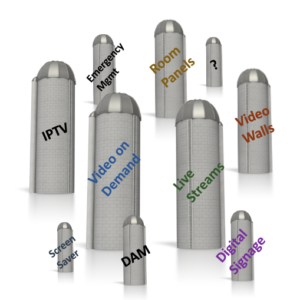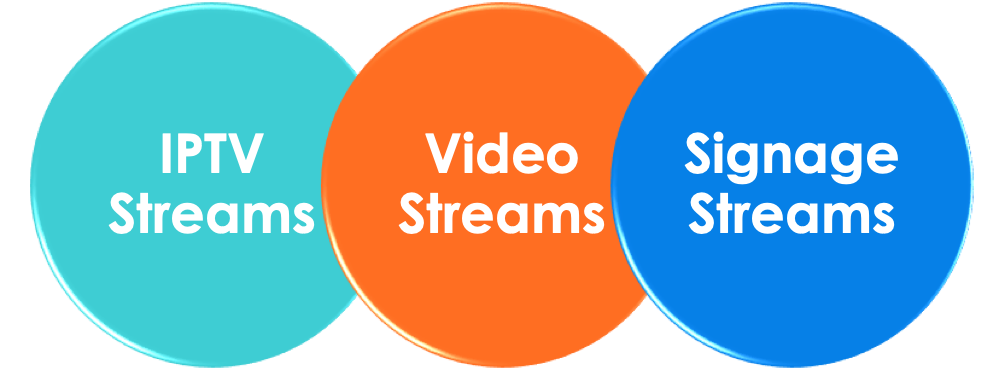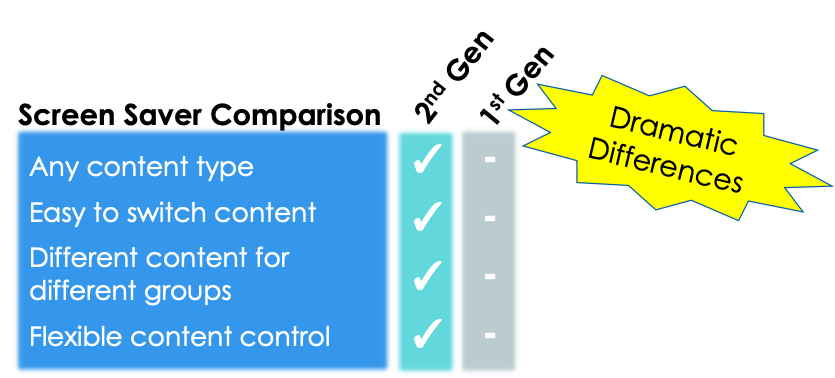
CCOs Delivering ROI with 2nd Gen CommsTech
Balancing Leadership, Culture, and Employee Priorities
As the Chief Communications Officer for your organization, you are continuously striking a balance between supporting corporate: CCOs Delivering ROI
- Leadership: tactical, strategic, and financial goals
- Culture: Affect and concretize cultural change
- Employees: Enabling them to thrive and foster their wellbeing
And keeping this balance in the face of the winds of change blowing in from the outside world.
Your role as CCO is becoming more critical for the company to maintain this balance. Communicating your organization’s messaging and affecting change in your corporate culture.

Affecting Cultural Transformation
In a recent survey of CCOs by Edelman, 51% of Corporate Communications executives report an increased focus on business transformation efforts and 56% already report increased use of communications technology (CommsTech).
Seth Godin writes, “Change happens horizontally. What do we expect from others? What do we talk about? Who do we emulate or follow or support? What becomes the regular kind? … Focused, persistent community action is how systems change. And systems concretize and enforce cultural norms.”
2nd generation CommsTech is allowing CCO’s to change the way they are communicating with their employees and affecting the cultural change required to support corporate goals.
CCOs Increasingly Using CommsTech
We are in a new era of communications technology (CommsTech), according to a late-2021 survey of Chief Communications Officers, published by Edelman.
In the survey, 70% of the CCOs say that CommsTech is a top investment for the coming year and 56% are already reporting an increased use of CommsTech.
The survey also goes on to report that 58% say it is hard to justify large technology investments.
CommsTech is a critical tool to affect corporate culture change. “In fact, cultural change always happens relatively slowly. Person by person, conversation by conversation. Expectations are established, roles are defined, systems are built.” – Seth Godin
The use of rich media, messaging wherever employees work, and the ability to communicate fresh content, often, are all important elements of today’s CommsTech. CCO’s need the right content and CommsTech to shape the conversation … day-by-day.


CCOs Delivering ROI with 2nd Gen CommsTech
The future, now that Corporate Communication means corporate communicators need to be seen as strategic business partners, must generate measurable business value, and demonstrate a Return on Investment (ROI). CCOs Delivering ROI
The ROI can be measured and used as evidence to support increased funding asks by linking the budget requests to strategic goals/priorities. Defined budget categories, in terms of business priorities, illustrate how an investment will enable progress against stated objectives.
With the right CommsTech, you do more with less. Make the budget you have go further by investing in people with agile, flexible skill sets and new technology that:
- Drives efficiency and enables the measurement of quantifiable results in today’s flexible work environment,
- Leverages your current IT infrastructure
Corporate Communications, Marketing, and Effective Storytelling
Corporate Communications is partnering with marketing as the lines between marketing and communications are blurring. Start small and learn. Then expand.
Pick one or two low-risk areas where more effective data analytics and technology could improve your impact — these opportunities develop confidence. Your brand must be brought to life through consistent storytelling, activation, and a creative newsroom that helps your stakeholders see human faces and voices.
Visually rich, persistent messaging extends the storytelling (consistent) to your employees. Shifting, directing, and re-enforcing the cultural change required to amplify corporate directions.
Rich media streaming CommsTech enables CCOs to shape the story in impactful ways.


Organizational Transformation? Call your CCO
Corporate communications functions are increasingly called upon to play a leading role in organizational transformation. This role is no longer limited to employee communications and reputation management.
It now includes strategy on how to engage and drive a shift in mindset and behavior across internal and external stakeholder groups — from workplace to marketplace — to achieve transformation objectives.
In an end of year survey by Edelman, 62% of the CCOs say that there is an increased focus on communicating with their employees, wherever they work from, and 54% rank an increased use of communications technology (CommsTech), as a top 5 priority.
Corporate communication teams are turning to a new generation of familiar tools, to deliver targeted and timely rich media communications content to their entire employee base, while minimizing costs by leveraging existing IT infrastructure.
Centralized or Distributed Corporate Comms?
“Corporate Communications structures continuously transform, often more as a product of incremental change than intentional design — each evolving to fulfill the unique strategies, needs, and operating environment of the business it supports.”, according to a late-2021 survey of Chief Communications Officers, published by Edelman.
Respondents to the Edelman survey have a corporate structure which falls into one of three basic frameworks:

Centralized and decentralized structures each have their own advantages according to Edelman:
- Centralized: CCOs report having a “greater awareness and access to business strategy and increased relevance across channels”
- Matrix & Decentralized: CCOs have “closer relationships with business leaders and more evidence of their work producing results”
Corporate communication teams are turning to a new generation of familiar tools, to deliver targeted and timely rich media communications content to their employee base. Allowing the communications team to deliver messaging in centralized, decentralized or matrix organizational structures.
Why Rich Media Streaming CommsTech is so Effective
Rich media streaming is the most engaging type of CommsTech that CCOs have available to them to shape corporate culture.
Why? Because rich media streaming communicates:
- The highest message density, in the shortest amount of time, and
- Is repeatable to re-enforce and ensure the messaging sticks – like a Commercial or Ad
Most large organizations have dozens of rich media streaming CommsTech use-cases for content streams being pulled by and pushed to employees. Video, live, and signage are the major CommsTech content streaming categories.
Sadly, IT has had to support rich media streaming use-cases by standing up and supporting one solution after another, resulting in a CommsTech landscape of many silos of rich media streaming technology.
Rich Media Streaming Use-Cases
The evolution of CommsTech rich media streaming – the use of corporate video, live, or signage streams was very organic. A need would pop up, and a solution found to address the need. Usually based on a use-case with an ROI.
Video use-cases for training, marketing, corporate communications led to the adoption of one or more corporate video platforms to manage the thousands of videos that are created and watched by the corporation’s employees, partners, and customers.
Live stream use-cases include live event remote participation, CEO corporate address, and live linear content streams – like a TV channel which is always on, the user tunes in as desired.
Signage streams were created first for digital signs and were really a downloaded loop of content. This has since evolved to be content streams to any signage endpoint: digital sign, video wall, room panel, kiosk, or a desktop or mobile device.
In most organizations, there is a different, or multiple different, solutions for every rich media stream type. Organizations are starting to “wake-up” to the fact that there are a lot of silos of CommsTech use-cases in place that don’t talk to each other.

The Problem with Siloed CommsTech
Using rich media streaming to communicate enhances your messaging helping you to shape corporate culture and facilitate organizational change.
These wonderful rich media streaming solutions are put in place to meet legitimate needs. But without an overall strategy, these technology deployments become silos and are difficult to manage – and costly.
Each technology solution has:
- Licensing costs
- Operational costs
- Support costs, e.g., training, integration
Even though there is an ROI associated with each of these silos of technology, the more of these silos you have, the more your management costs escalate on multiple fronts. There is a better way.

Unified Rich Media Streaming
Deploying rich media communications solutions makes your corporate messaging more impactful.
How can you move your CommsTech game to the next level? By simplifying and harmonizing the use of rich media communication use-cases onto a single communications platform.

A rich media streaming platform unifies the different types of content streaming for your entire organization to utilize and allows the organization to sunset their silos of technology.
You can realize a significant ROI from a unified rich media streaming platform and be nimbler and more effective in shaping corporate culture.
Change the way Corp Comms communicates with a 2nd Gen Screen Saver
Corporate communication teams are turning to a new generation of a familiar tool, to deliver targeted and timely rich media communications content to their entire employee base no matter where they work.
The 2nd gen screen saver eliminates the biggest flaw in 1st gen screen savers – stale content.

How?
By giving Corp Comms the ability to stream new content of any type, at any time. Making your messages timely and targeted, and eliminating the need to rely on IT to implement changes every time the content needs to be changed.
Corporate Communications teams are excited with this new generation of the corporate screen saver. It is changing the way corporate comms communicates to their employee base.
CommsTech Silos are not Efficient and Cost too Much
Rich media streaming communication solutions allow you to shape your corporate culture through media rich messaging. The use-cases for rich media messaging has resulted in a proliferation of CommsTech solutions within your organization.
These solutions are typically silos of technology serving a single use-case and in some cases serving only a part of your organization – a department, division, unit, brand, or country.
Piecing a silo technology landscape together, ad hoc, over time, results in inefficiencies in cost and in not being able to leverage the technologies working together. The whole is never greater than the sum of the parts.


The Painless Path to 2nd Gen CommsTech
In a late-2021 Edelman survey, 70% of the CCOs say that CommsTech is a top investment for the coming year and 56% are already reporting an increased use of CommsTech.
How can you move to 2nd Gen CommsTech without standing up more silos of technology compounding your technical and operational costs?
One simple, but powerful way is to implement the use-case for a 2nd Gen Screen Saver on a rich media streaming platform. This approach:
- Allows Corp Comm to change how they communicate to their employee base in an easy, flexible, meaningful, and lasting way
- Leverages current IT infrastructure and relieves IT from managing ongoing content changes
Then gradually migrate your many other use-cases from the silos of technology to the new platform, with a net cost savings and increased capabilities.
With a 2nd Gen CommsTech platform, you can message corporate-wide, and/or serve the needs of smaller corporate units.
With a unified rich media platform in place, it is easy to add in other use-cases as the need arises.
CommsTech: Getting multi-dimensional ROI
The future, now that Corporate Communication means corporate communicators need to be seen as strategic business partners, must generate measurable business value and demonstrate a Return on Investment (ROI).
A recent Edelman survey of CCOs reports that 58% say it is hard to justify large technology investments. But CCOs who understand that a 2nd Gen CommsTech rich media streaming, unified platform strategy (versus silos of technology) can deliver better tools and a resounding ROI.
CCOs delivering ROI? How?
- Use-case ROI: each use-case has an ROI whether it is a standalone solution or part of a unified rich media streaming platform.
- Ownership ROI: this includes licensing, operating, using, and maintaining the technology
- Implementation ROI: Evaluating and implementing new use-cases on a silo-by-silo basis, versus simply lighting up a new use-case on an existing, corporate-wide, rich media streaming platform
- Opportunity cost ROI: Some use-case capabilities are only available on a unified platform and the speed of implementation of new use-cases is much faster on a unified platform

Lighting up CommsTech Use-Cases on a Unified Rich Media Streaming Platform
The recent Edelman’s CCO survey report states that, “Nine out of ten organizations are in some form of transformation, but more than three quarters fail [McKinsey]. Corporate communications functions are increasingly called upon to play a leading role in organizational transformation.

This role is no longer limited to employee communications and reputation management, but now includes strategy on how to engage and drive a shift in mindset and behavior across internal and external stakeholder groups — from workplace to marketplace — to achieve transformation objectives.”
Using 2nd generation CommsTech is a great way to help shape and shift the corporate narrative. But it isn’t easy to implement or expand technology use-cases with siloed technology solution approach.
Shifting to a platform which can serve as a corporate-wide CommsTech solution, as well as serving the individual needs of smaller communities within the corporate structure, gives you greater capability, flexibility, and responsiveness to new use-case requirements.
With a unified rich media platform in place, you can “light-up” new CommsTech capabilities on demand!
CCOs are Taking Stock & Setting Direction for their CommsTech
CCOs are using 2nd Gen CommsTech to strike a balance between supporting corporate leadership, culture, and employees, in the face of the challenges blowing in from winds of change in the outside world.
So, what can CCOs do to meet those winds of change head on? How can CCOs deliver ROI?
Embracing the right 2nd generation CommsTech to meet your objectives and challenges and clearly understanding how the use of 2nd generation CommsTech can help you on your journey.
Specifically:
- Where are you now?
- Where are you wanting to get to?
- How might you approach getting there?
It is easier to get there if you have a good guide.



